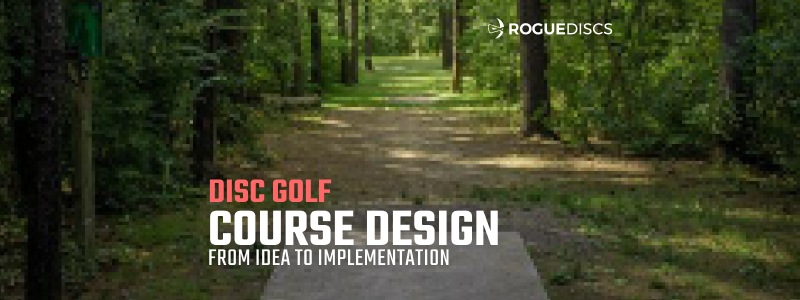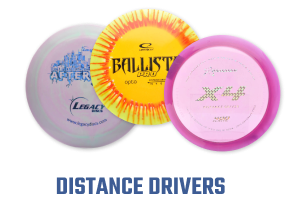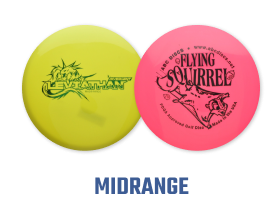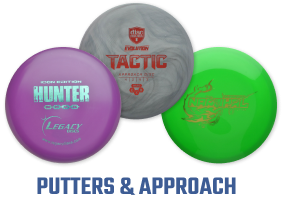
The world could use more QUALITY disc golf courses. Note the keyword in that sentence. Many courses have been designed throughout the years with less than adequate creative inputs. More people than ever are playing our sport, and courses the world over are filled with enthusiastic players. This is great! However, many quality courses have become increasingly filled with wait times and backups. Most communities have not been able to skillfully spread out players via multiple quality courses.
For this reason, I interviewed Randy Schukar about how to go about the design process, from idea to implementation. Schukar has designed twelve courses and had input on countless others. He proclaims his design process as an “artistic endeavor.” Think outside the box for where courses can be installed and for funding these projects. Then the fun begins.
Schukar prefaced the interview by championing a certain approach. First, ”Find someone who has already designed courses and get them on your team.” He then said, “To do good design, you must have good goals. You figure out how to fit your objectives inside your parameters.” This is true of any design process, inside or outside disc golf. But this is especially true for course design. For whom and why are you building the course? Ask yourself these questions, and the project will find direction. Schukar said, “You do not need to be a great player to be a great course designer.” This is a common misconception and stops many people from ever taking the leap into design; You can do it! Make sure to have a plan with goals as you look for a property to work with.
So You Want To Design A Course
So the seed has been planted, and you want to design a course. While your ideas may be great, and you may even know some of the concepts of course design, you still need a plot of land. First things first, find your plot of land. Maybe it is a private piece of land you have access to, possibly a public piece of land, or at a park. Wherever the piece of land is, you must get permission. Private land is easy. Talk to the people that own the land. Public land is a bit more tricky.
To gain permission to install a course on public land, you must find out what jurisdiction the land falls under. Start by talking with your local government and proceed from there. They can tell you about zoning and how to proceed. Then comes the dirty work of contacting the correct officials and possibly attending park board meetings and pitching your ideas. Luckily disc golf is now in the public consciousness, whereas years before, it was tough to pitch an idea about throwing frisbees at metal targets as something beneficial for the city! Schukar had this to say about proposing disc golf courses back in the 90s; “In the old days, we had to tell the parks department what disc golf was. Those workers mostly didn’t know what the sport was. Can you imagine trying to explain the sport back then? Most park employees now at least have an idea of the sport due to more exposure through the years.”
One of the best ways to approach this process is to find underutilized land under city ownership and go through the process of speaking with city officials. Disc golf has experienced increased exposure, and the benefits of a course on public property are well documented. Make sure you show up to meetings with a proposed budget to paint a picture of expenses. From here, it is time to learn how to design a course.
Where To Start
At this point, you have permission to install a course. Excitement will be high as you take your next steps. Two directives should begin simultaneously;
1. Raise money
2. Design the course
First, figure out how you will fund the course. This can come from many sources. Most people forget about this aspect of course design. Be prepared. Step one is to figure out your budget. This will help you in meetings, so it is clear how much money needs to be raised. If the course is on public land, the easiest source would be from the city. This has become increasingly possible as cities now understand the benefits of disc golf for their properties. Other possible sources of income are from local businesses, local disc golf clubs, fundraising events, private donors, etc. Be creative with your fundraising and keep all doors open. You never know who will have an interest in sponsoring a course.
Simultaneously it is time to design your course. Walk your land and bring friends along. I highly recommend having an experienced course designer with you as well as other players who can give input. “Walk the property first, and don’t even try to design holes,” said Schukar. Take in the physical landscape and note interesting aspects of the landscape for hole placement. Items to bring with you on the second walk are as follows;
- Ribbon(multiple colors for marking trees/brush for certain removal as well as potential removal)
- Measuring wheel
- Discs to try out various lines
- Shovels
- Tree trimmers
- Rangefinder
- Spray paint(for marking tee pads, etc.)
Be open to input from the more experienced designer and other players. Look for unique features of the landscape and design your holes directly into them. “When you get to a property, you find the coolest holes possible and then try to link them together,” said Schukar. Maybe it is a beautiful landing zone or a mesmerizing tree, or a water feature; incorporate interesting features into your course and design around them. Schukar also recommends finding your parking area and designing holes 1, 9, 10, and 18 first. Have holes 1 and 10 start by the parking area, and holes 9 and 18 finish back toward the parking area. This provides a foundation so that players can loop back by their car, play only nine holes if time permits, grab water, etc. Then you are able to design the rest of the holes with the flow.
“An ideal design is out and back(holes 1-9) and out and back(holes 10-18). It makes sense to start with those and then be flexible. You work from those points.” For this initial design period, Schukar recommends bringing lots of ribbons to mark trees for removal so you can visualize lines. “I always walk the property with lots of ribbons. We mark trees to be taken out or possibly taken out. I walk back and forth and back and forth to visualize the line. You can also never be sure how long the hole is until you walk it with the measuring wheel. So make sure you are designing holes that challenge players with both distance and accuracy.”
Schukar recommends variety throughout your course. This will keep players interested and also develop a multitude of skills which will create better players. Make sure that your course is well spaced, as safety is a must. Schukar recommends researching John Houck and possibly attending one of his course design workshops. Houck is the most prolific designer in the world and has over 120 solo designs.
Bringing It All Together
Disc golf has experienced a boom in recent years, and courses have become increasingly filled, especially well-designed courses. To make sure our sport continues to grow in a positive direction, we need more quality courses across the globe. Many people have design ideas, and I highly encourage you to follow through and take the next step toward course design. Find a plot of land and begin your adventure. Develop relationships with more experienced designers and begin the fundraising process. Then get out that ribbon and visualize the lines. The disc golf community will be thankful!




